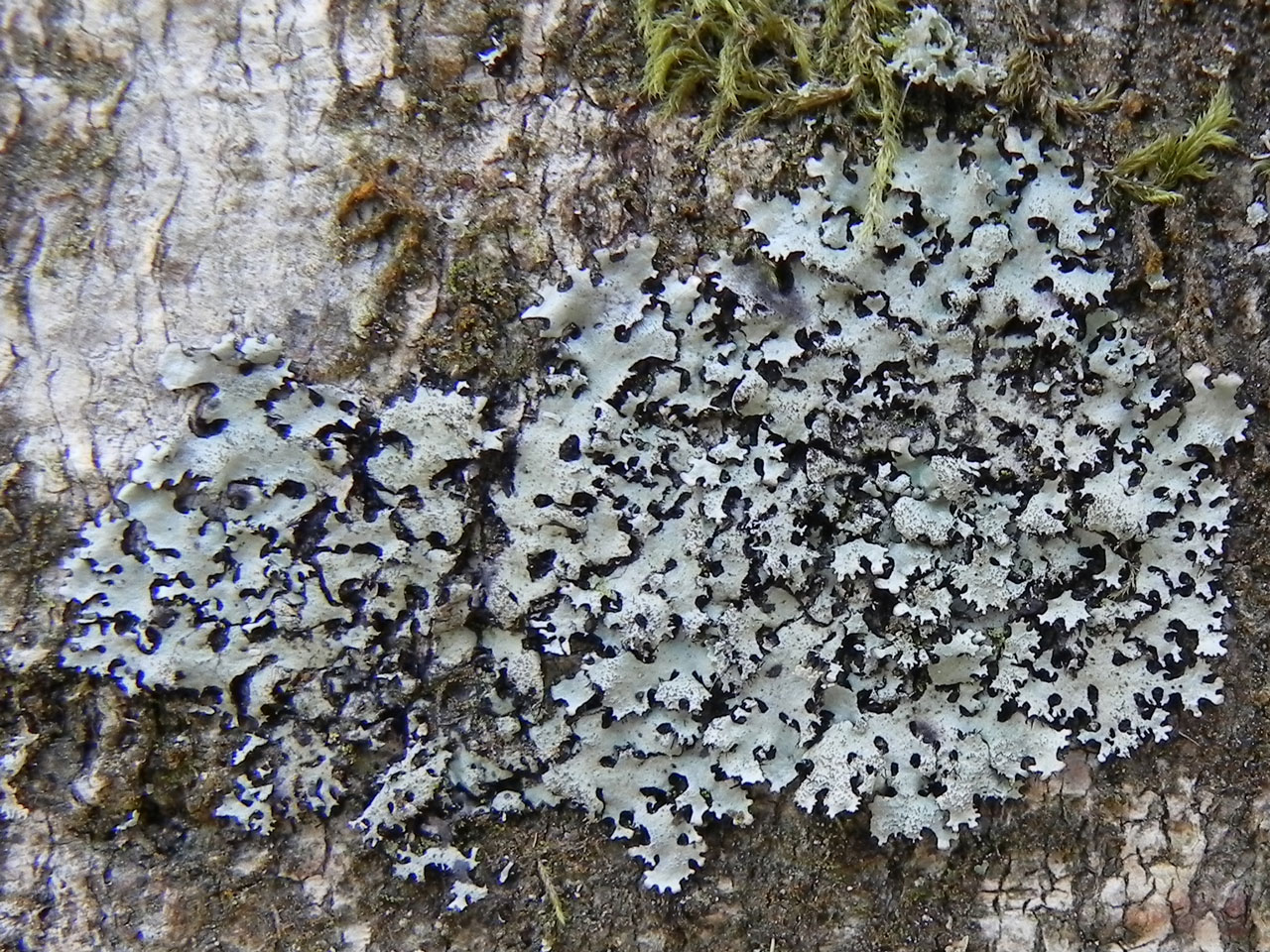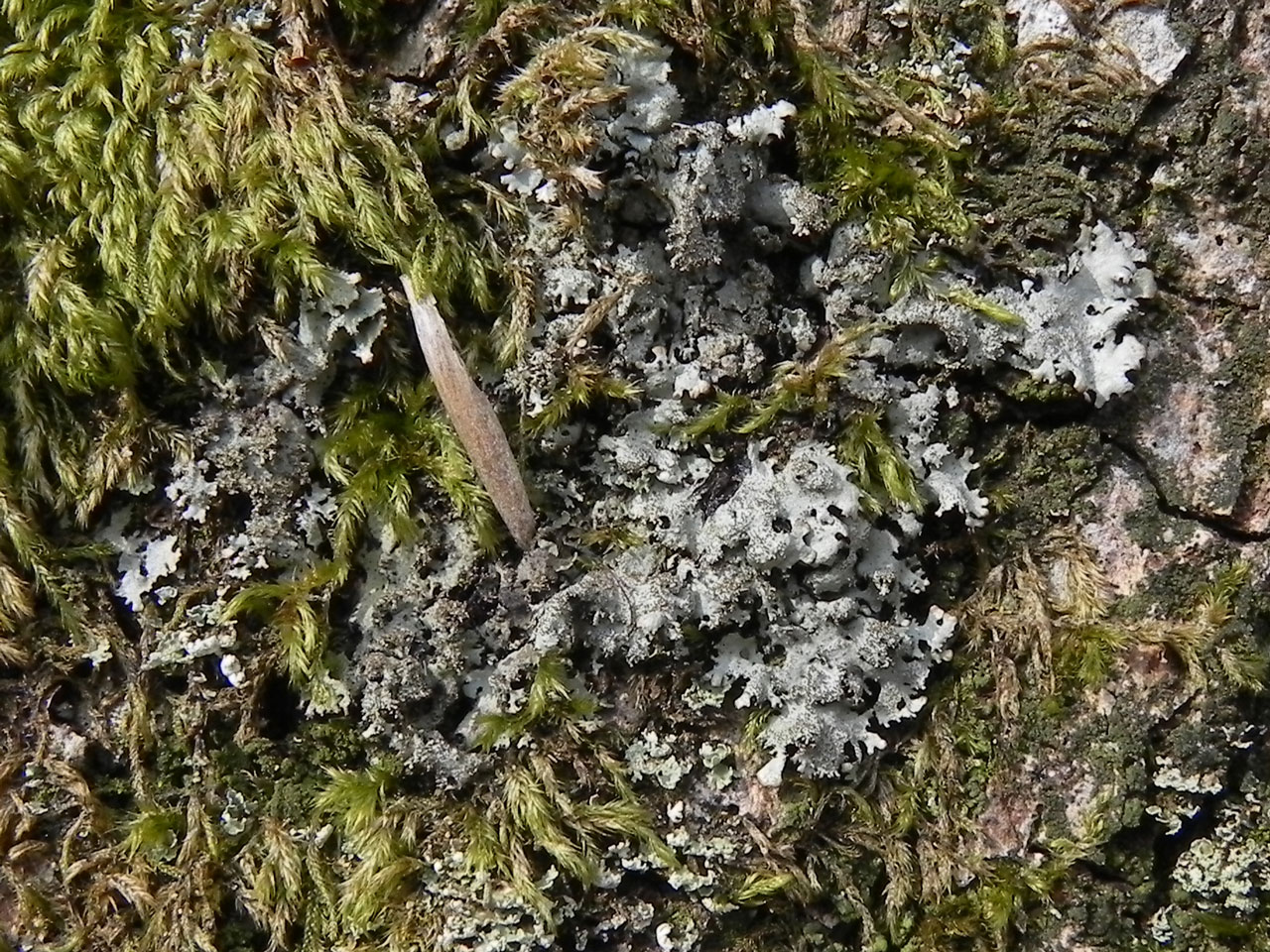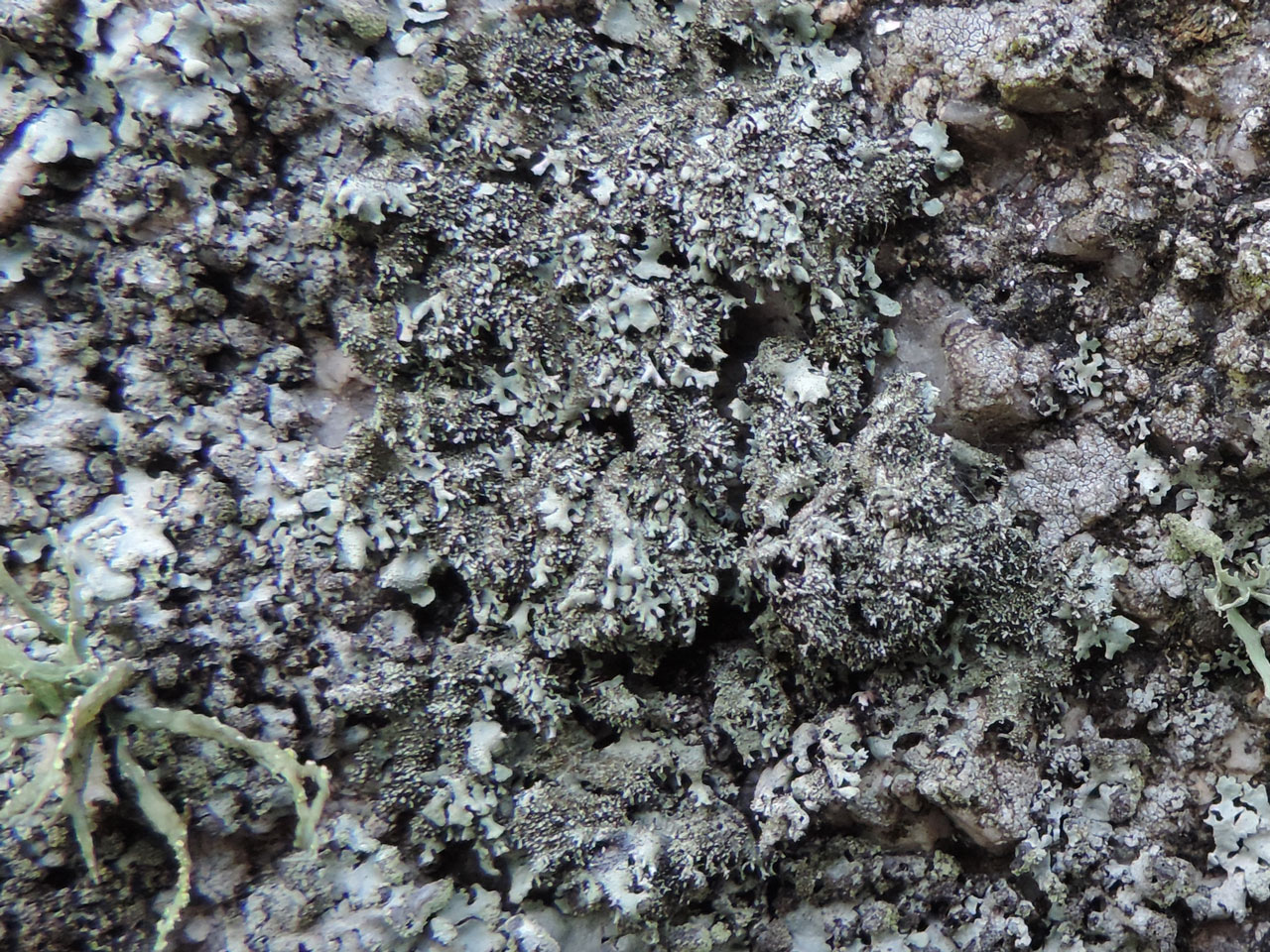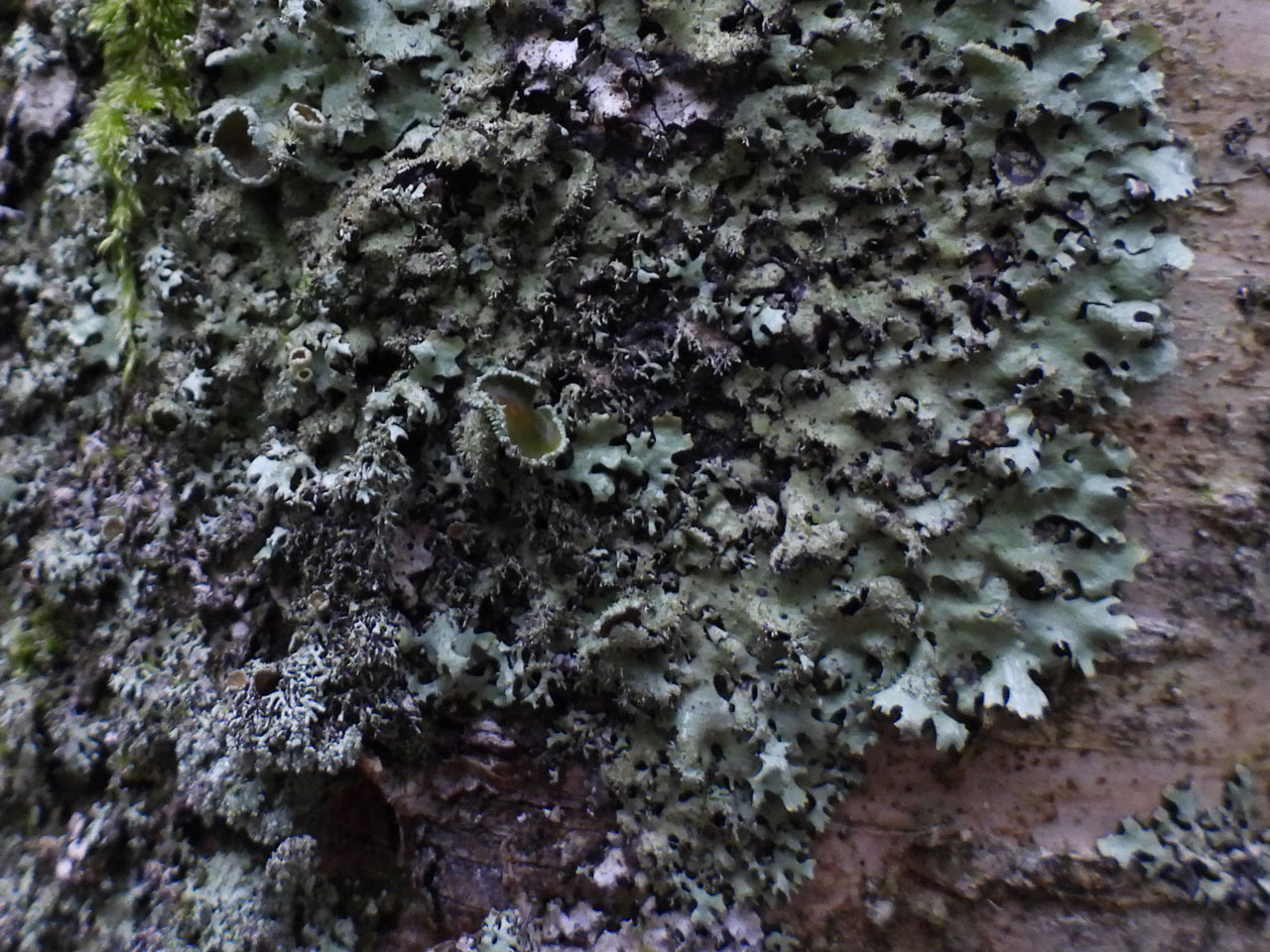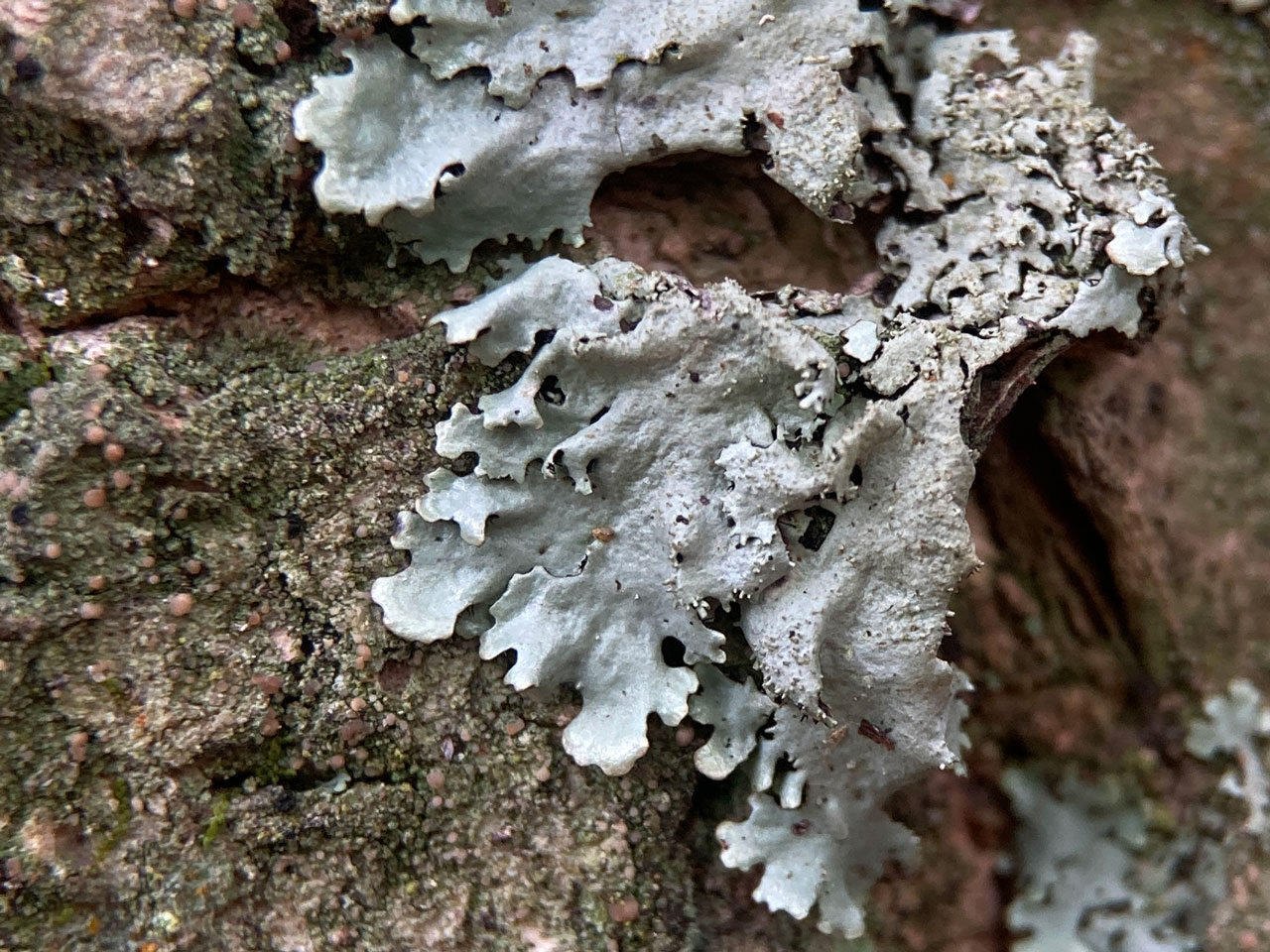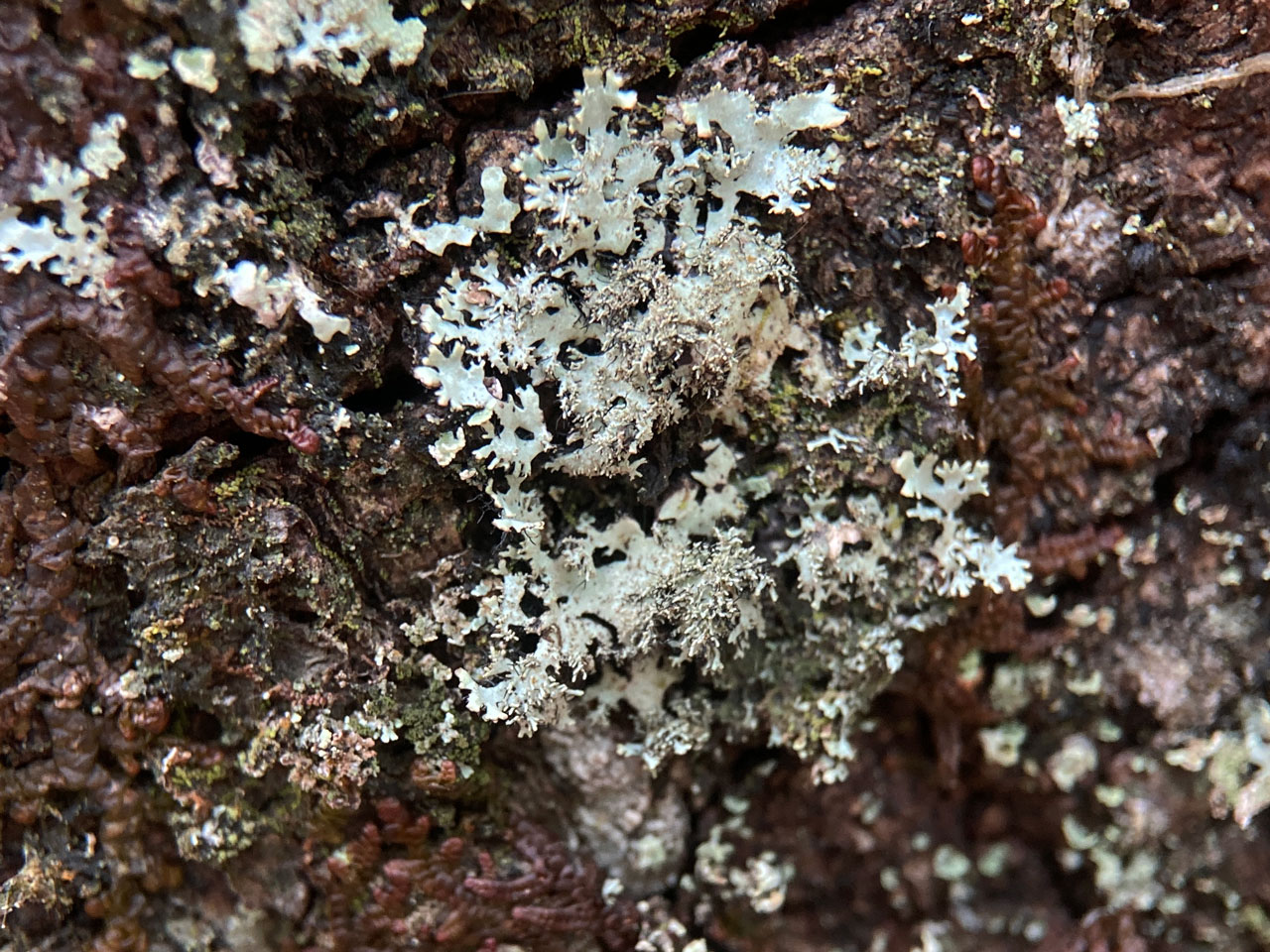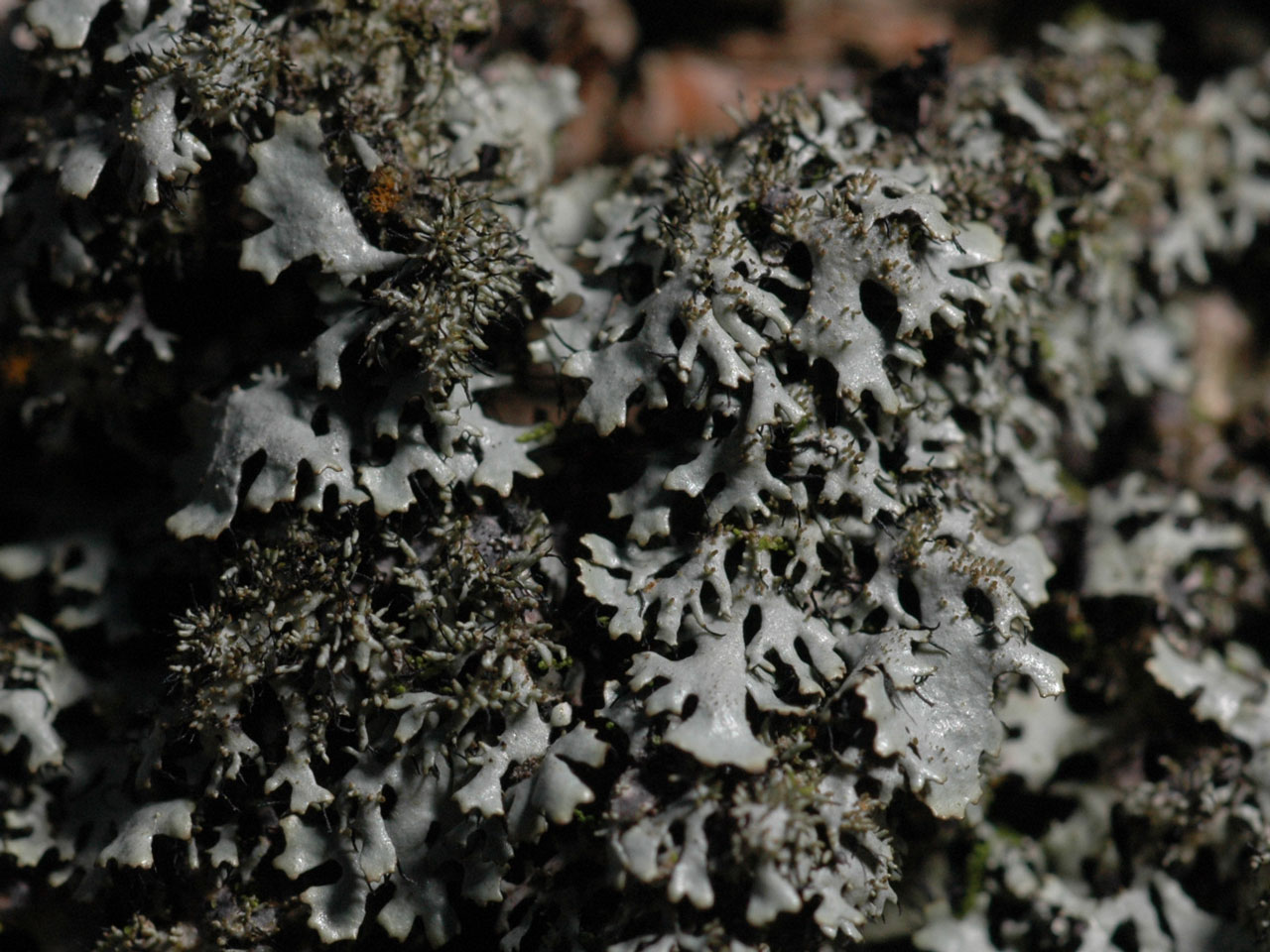Hypotrachyna horrescens
Well developed material of this lichen has a very thorny appearance, as reflected by name “horrescens”, this look is produced by numerous flattened laminal isidia with cilia growing at their base. Combined with the C– medulla this makes this a distinctive lichen. It is found in warmer humid oceanic woods, and on rocks in heaths, from Cornwall east to the New Forest and north to the Lake District. North Wales has especially large populations in a European context.
Thallus tightly appressed, 2–7 cm diam., ± irregular or forming small rosettes; lobes crowded, to 3 mm broad with subtruncate apices; margins frequently irregularly incised, often becoming lobulate, with abundant, mostly unbranched cilia; upper surface grey-white, matt or partly shiny, isidiate; isidia laminal, dense and ± obscuring the thallus, cylindrical or flattened when well-developed and becoming ± lobulate-coralloid, often dark-tipped with cilia growing from base or tips of isidia; lower surface black, ± brown towards the apices; rhizines unbranched or rarely squarrose or dichotomously branched. Apothecia very rare, sessile, 2–4 mm diam.; disc concave, split at maturity, dark brown to red-brown; thalline margin irregularly incised and ciliate-isidiate. Ascospores broadly ellipsoidal, 12–15 × 9–11 μm. Pycnidia not reported for British specimens. Cortex K+ yellow; medulla C–, K–, KC+ rose-red, Pd–, UV– (atranorin, sometimes also gyrophoric acid and a complex of medullary substances).
Hypotrachyna minarum lacks the laminal cilia associated with isidia, which are never flattened, and has a C+ pink medulla (gyrophoric acid major). Parmotrema crinitum also has ciliate isidia but is distinguished by the larger thallus, the broad (around 5 mm wide) marginal zone without rhizines on the lower surface and by the K+ yellow medulla (stictic acid).
On strongly acid bark of old broad-leaved trees in ancient (sheltered, humid) woodlands and on sheltered sides of rock outcrops.
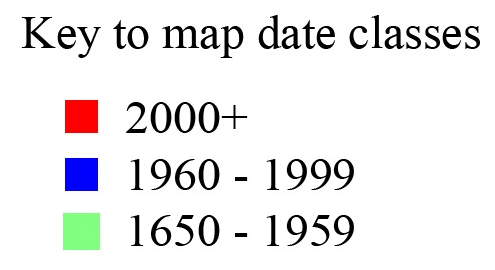
Localised. S. & S.W. England (New Forest, Devon, Cornwall), C. & N. Wales, where locally abundant, Lake District & S.W. Ireland.
A warn temperate to humid subtropical lichen, which is very localised in Europe, with large and significant populations in Britain, especially in North Wales. Potentially threatened by increased shade woods and vegetation over growth in heaths due to under grazing and assessed as Near Threatened.
Britain: Near Threatened & International Responsibity Species
Wales: Near Threatened & Section 7 species
Cannon, P., Divakar, P., Yahr, R., Aptroot, A., Clerc, P., Coppins, B., Fryday, A., Sanderson, N. & Simkin, J. (2023). Lecanorales: Parmeliaceae, including the genera Alectoria, Allantoparmelia, Arctoparmelia, Brodoa, Bryoria, Cetraria, Cetrariella, Cetrelia, Cornicularia, Evernia, Flavocetraria, Flavoparmelia, Hypogymnia, Hypotrachyna, Imshaugia, Melanelia, Melanelixia, Melanohalea, Menegazzia, Montanelia, Nesolechia, Parmelia, Parmelina, Parmeliopsis, Parmotrema, Platismatia, Pleurosticta, Protoparmelia, Pseudephebe, Pseudevernia, Punctelia, Raesaenenia, Tuckermannopsis, Usnea, Vulpicida and Xanthoparmelia. Revisions of British and Irish Lichens 33: 1-98.
Text by N A Sanderson, based on Cannon et al (2023).
